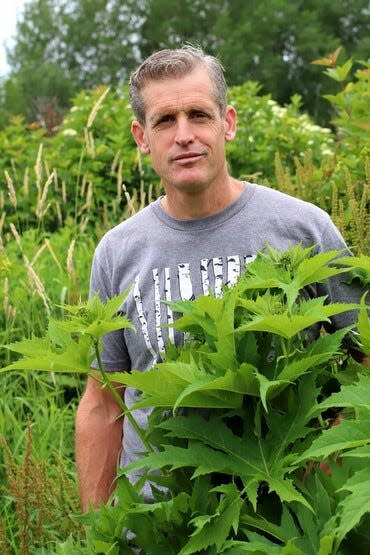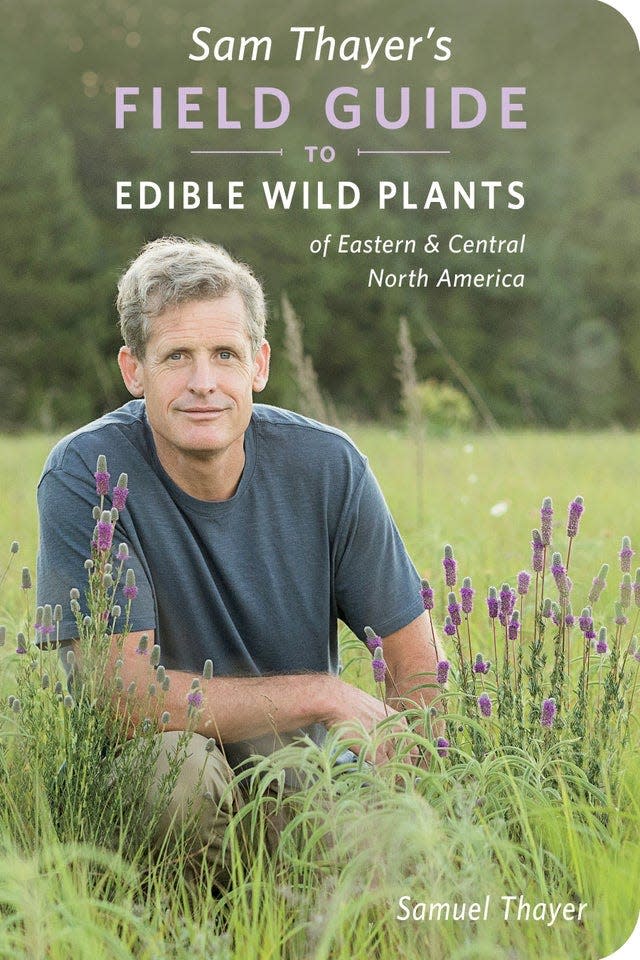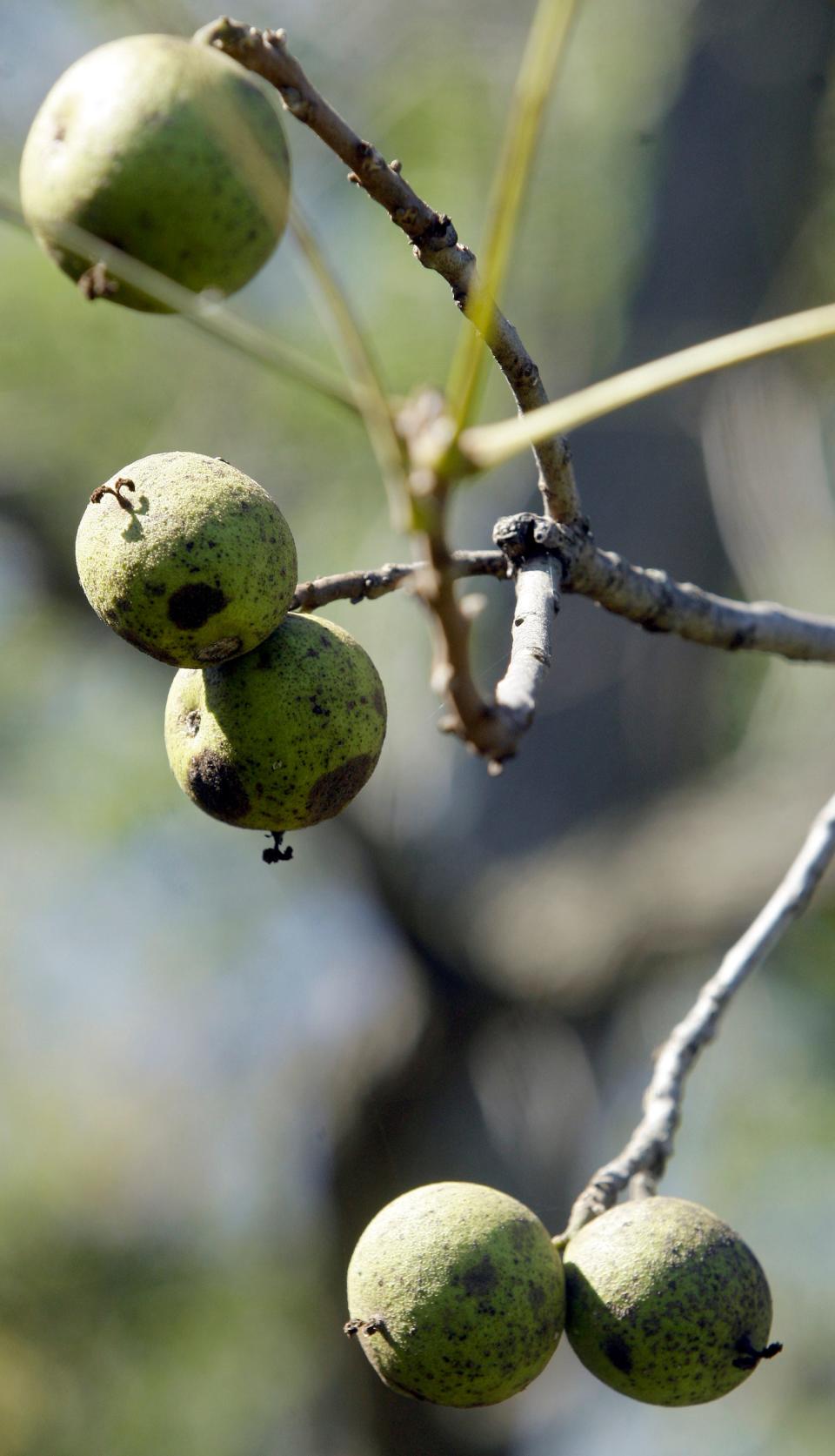For forager Samuel Thayer, 'foraging is also the normal stuff'

Endless exploring outdoors as a kid fed a need and a hunger in Samuel Thayer. He found food in the plants and trees, and it was free. Even today, decades later, he’s scouting the landscape for plants and edibles others often overlook.
Born in Wausau and raised near Madison, his passion for foraging and educating himself and others helped him build a career advocating for and educating about wild edible plants. He loves to tell people about free food in their own backyards and beyond.
After growing an audience and realizing he could build a business around something he loved and was doing anyway, he created Forager's Harvest. Today he lives in Weyerhauser with his wife and kids, and spends much of his time making the case for wild foods by teaching classes around the country, producing maple syrup and owning an organic orchard.

He has authored several books on foraging and wild edibles, leading others through the world of identifying, harvesting and preparing edible wild plants. His latest book, “Sam Thayer’s Field Guide to Edible Wild Plants of Eastern and Central North America” was published in June by his Foragers Harvest Press. The book features 679 edible species and 1,700 photos.
His next stop will be at the 41st Madison Herb Fair presented by the Madison Herb Society which runs from 10 a.m. to 4 p.m. Nov. 4 at Olbrich Botanical Gardens, 3330 Atwood Ave., Madison. Thayer speaks at 10:30 a.m. Admission is free.
We talked with Thayer by phone, in the midst of apple season while he was making deliveries to customers in northern Wisconsin and Minnesota.
Foraging means free food and a future
My family was angry and hungry. Foraging was a way to get away from both of those things and get free food. I lived in one of these households where there were plenty of calories but not a lot of healthy food. There was all the cereal and oatmeal I wanted. ...
I started hunting, fishing and gathering food at an early age. It slowly built into a career. I started leading plant walks. I tried to start a foraging club when I was about 18 or 19. That ended up being me teaching a class, and eventually I started charging money.
His basic guidelines for every forager
There is responsible foraging in terms of respecting land owners and rules and expectations, and in terms of not overharvesting. There is also responsible foraging in terms of your own safety. You eat things only when you’re 100% certain of what they are. Those are your three basic guidelines.
Why he considers foraging a hobby
I think it is appropriate to call it a hobby. I definitely promote it mostly as a hobby. There are some people who do it commercially. By the time they get to that point, they’re way beyond me. This is a fantastic, fun way to add highly nutritious free food to your life.
Creating educated eaters
Food traditions are passed from person to person, so it is impossible to be self taught, and experimenting with unknown plants is something we strongly advise against.

Sorrel is a great starting point
You learn to forage one plant at a time. You don’t learn foraging as a totality. I started with wood sorrel, a sour plant that grows in people’s yards. Probably one third of people who forage start with that. Certainly it is the most common first one. I learned black walnut from my grandmother, butternut from my father. I learned wild strawberry just by deduction — hey, these are just smaller strawberries.
Then when I was 10 I discovered there were books about edible wild plants and mushroom books. That opened a whole new avenue toward learning.
'Foraging is also the normal stuff'
You go wherever the knowledge is. It is easy to forget that every single culture in the world employed foraging to a significant degree until the last three generations. ... Foraging is still more normal in rural areas. It is just more limited. If I have a group of people I ask, "Who forages?" A few hands go up. If I say, "Who here picks wild blueberries or black raspberries," 90% of hands go up.
We think of foraging as gathering abnormal stuff, but foraging is also the normal stuff. Every rural area, even today, has a small number of things that are considered normal. People can go gather them. It is usually five to 15 different plants, but everybody has heard of these. For instance if you are in southwestern Wisconsin, you’ve heard of hickory nuts and black walnuts, even if you’ve never picked them.

What he’s presenting at the Madison Herb Fair
I’ll be talking about foraging through the seasons, the circle of the seasons, how I incorporate wild foods into my everyday diet. I will be speaking in generalities and give specific examples. So spring is a time for leafy greens. Within walking distance of your house in Wisconsin you have at least 100 different leafy greens that are good, and here is how I use it. I like to mix it up so my presentations are never the same, and I tailor it to where I am going.
The most important issues foragers face today
Over the more than 40 years I’ve been foraging, and 30 years I’ve been teaching, some people are going to be shocked, but the most significant changes I have seen in foraging is number one, the use of herbicide. It has exponentially expanded in the last 25 years. As a safety issue, herbicide has become the most important safety issue for foragers, and the most difficult to navigate. A lot of people are not aware of the level to which herbicide use has proliferated, but I think it is the greatest environmental issue of our time.
The top three tools a forager needs
They are so simple. ... A scissors is nice for cutting greens and various things. I like the ones that have a spring on the handle that you might use for trimming flowers. Then the number one thing is your containers. I have 3.5-gallon food grade tubs that they use in restaurants, and I don’t go anywhere without them. They’re in my vehicle now. Then a nice cloth bag, clean, with three or four plastic bags inside it. That is all you need to get into foraging.
Fork. Spoon. Life. explores the everyday relationship that local notables (within the food community and without) have with food. To suggest future personalities to profile, email clewis@journalsentinel.com.
This article originally appeared on Milwaukee Journal Sentinel: For forager Samuel Thayer, 'foraging is also the normal stuff'

